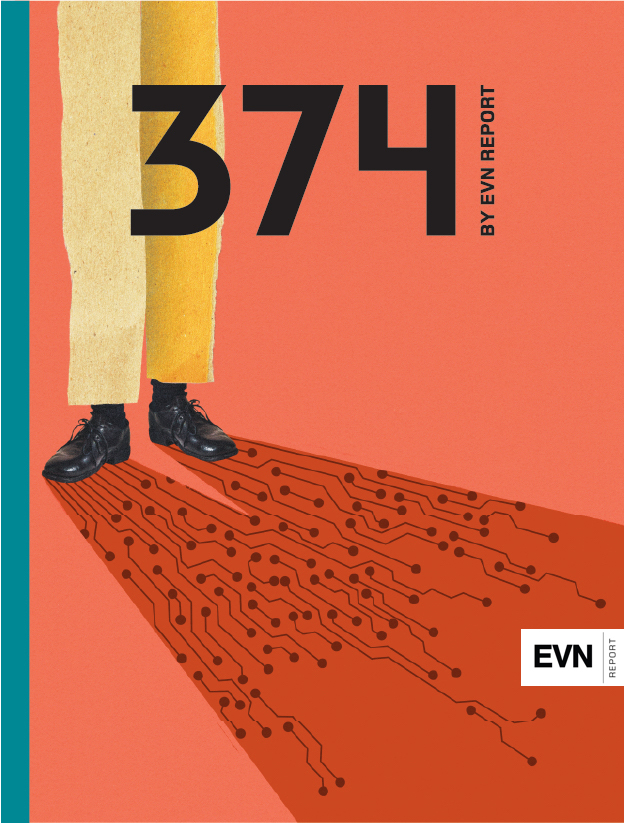

“Am I holding it long enough?” asked the young Armenian gymnast. He turned to each judge to confirm that he had held the position for a sufficient duration. This rebellious act could have ended his career as an artistic gymnast, but instead, it became known as the Azaryan Cross –– a unique variation in which the gymnast hangs straight, with outstretched arms, like a crucifix, with a quarter turn to one side. It was the first time an athlete had ever performed this move.
The incident took place during the 1953 USSR Championship. Albert Azaryan felt that the judges were unfairly scoring the members of the Armenian team. He later discovered that the low scores were due to the athletes allegedly not holding the cross for the required three seconds. Angry at the unfair treatment toward his team, Azaryan unknowingly created a new element on the rings that later became his signature move.
Despite his remarkable performance, he received a low score and the head of the jury wanted to disqualify him for speaking during the routine. Fortunately, one of the judges recognized that what Azaryan had done had never been done before and argued against his disqualification. As a result, Azaryan was reinstated and invited to be part of the USSR national team.
In a short period of time, Azaryan became a three-time Olympic champion, four-time world champion, and two-time European champion. He went on to participate in competitions held in 49 countries, winning 45 gold, 42 silver, and 10 bronze medals. Azaryan, who started his career in gymnastics at the age of 17, attributed his strength and physical skills to being a blacksmith’s student from the age of 15, after his father’s death.
After a fulfilling career and unprecedented success, Azaryan began coaching others. He was appointed the director of a specialized artistic gymnastics school which was later named after him. In 2022, a bust of Azaryan was placed in front of the school to honor his contributions to Armenian gymnastics.
Azaryan’s legacy inspired many generations of athletes to follow in his footsteps. One of the first to do so was his own son, Eduard Azaryan, who became a four-time Soviet Champion and an Olympic Champion. In honor of his father, he repeated the Azaryan Cross.
However, Albert Azaryan was not the first artistic gymnast to bring the Olympic gold to Armenia. When he was beginning his rewarding career, Hrant Shahinyan was at the height of his own. In 1952, in Helsinki, four years before Azaryan became an Olympic champion, Shahinyan won two gold and two silver medals, becoming the first Armenian Olympic Champion in modern Olympic history. In that competition, Shahinyan introduced a new element on the pommel horse which was named after him. Two years later, Shahinyan went on to become a two-time world champion. After retiring from competition, he began coaching young gymnasts in Armenia and opened the country’s first gymnastics school. Today, the school is named after him.
Fast forward to the 2000s, and the legacy of the forefathers of Armenian artistic gymnastics continued to thrive. The sport became increasingly popular in Armenia, with an increase in numbers across the board between the earliest available data from 2001 and the latest available data from 2021. In 2021, Armenia boasted 291 gymnastics groups with a total of 2,660 athletes and 170 coaches. Of these, 1,486 were women and 1,174 were men. The majority (1,154) of male athletes were in artistic gymnastics, while the majority (1,082) of the female athletes were in rhythmic gymnastics.
As the popularity of gymnastics increased, so did the success of Armenian gymnasts. In 2011, Harutyun Merdinyan became the first gymnast to win a medal for independent Armenia in the European Championships. He went on to win five more medals, two of them gold and two medals in the World Championships (in 2015 and 2022). At the age of 38, he continues to compete in gymnastics and coach a young generation of Armenian gymnasts.
Nine years after Merdinyan’s success, Arthur Davtyan won bronze in the vault at the 2020 Olympics in Tokyo, earning the first Armenian medal in artistic gymnastics in the Olympics. In 2021, Davtyan participated in the World Cup in Cairo, where the new element he performed on the pommel horse was officially named after him. In 2022, he earned a gold medal at the World Championship. A year later, Davtyan became both World and European Champion in artistic gymnastics by winning the gold medal at the European Championship in Turkey.
In recent years, success in artistic gymnastics competitions also involved female athletes. Houry Gebeshian, an Armenian-American gymnast and doctor, represented Armenia in the 2011 World Artistic Gymnastics Championships, the 2015 European Artistic Gymnastics Championships, and the 2016 Summer Olympics in Rio de Janeiro. Gebeshian made history as the first female artistic gymnast to represent Armenia in the Olympics. Although she did not qualify for the final round, she introduced an original element on the uneven bars that was officially named “The Gebeshian.” This move is described as a Hecht mount with a 360-degree turn and a repulsion off the low bar to the high bar.
Armenian athletes are also breaking new ground in junior gymnastics. At the 2022 Junior European Championship held in Munich, Erik Baghdasaryan earned a gold medal on parallel bars. That same year, Hamlet Manukyan, another junior athlete representing Armenia, won second place.
A year later, at the Junior World Artistic Gymnastics Championships held in Turkey, Hamlet Manukyan won two gold medals, becoming a two-time world champion at just 15 years old. During the same championship, another Armenian athlete, Mamikon Khachatryan, placed second, winning the silver medal on the same pommel horse.
According to Sahak Antonyan, the head secretary of the Federation of Gymnastics in Armenia, this progress made in gymnastics is “excellent” and speaks for itself. The Federation, which is financed by the Ministry of Education, Science, Culture, and Sport, is responsible for organizing gymnastics competitions within and outside of Armenia. Additionally, the Federation oversees and manages all activities related to the national teams.
All of the athletes on the national team come from the two specialized gymnastics schools in Yerevan, named for Albert Azaryan and Hrant Shahinyan, respectively. The Gymnastics Federation reports that all members of the adult team come from the Albert Azaryan School of Gymnastics. On the junior team, some athletes also come from the Hrant Shahinyan Sports School.
In Armenia, there are only a few specialized artistic gymnastics schools. Apart from the two mentioned in Yerevan, there are gymnastics schools in Gyumri, Vanadzor, and Echmiadzin. However, the last two are not in proper condition to fully serve their athletes. Consequently, with only three specialized schools functioning properly, two of them in Yerevan, gymnastics remains inaccessible to most of the youth from the regions.
Antonyan noted that even existing schools lack the necessary equipment and building conditions, which he believes are the main obstacles to the further development of artistic gymnastics in Armenia. However, the Federation remains hopeful for the future, as the municipality is constructing a new gymnastics school near Dalma Garden Mall in Yerevan that will meet all the standards of a sports school, according to Antonyan.
The construction of a new school is not the only positive news for Armenian gymnastics. Thanks to the combined efforts of the Armenian government and the Gymnastics Federation, Armenia will host the 2027 European Championship, marking the first time a European Championship in A-level sports is being held in Armenia. The federation is optimistic that the championship will attract more people to the sport and help resolve the issues of equipment and infrastructure in the country. The improvements will benefit both Yerevan and the regions, as they will also receive proper training equipment.
Looking ahead, the most significant event for artistic gymnasts is the World Championship, which begins in September. This is where the participants of the 2024 Paris Olympics will be determined.
The future looks promising for artistic gymnastics in Armenia. Recent success in various championships and the prospect of improving the necessary infrastructure for the sport will offer Armenian athletes new opportunities and motivation for future achievements.
Magazine Issue N31
Sport
Sports have always played a crucial role in societies, contributing to the physical, mental, and social well-being of individuals, communities and nations. Their significance extends beyond mere entertainment, fostering unity, discipline, resilience and personal growth.
While headlines in Armenia, Artsakh and the region are dominated by conflicts and despair, sports and sporting events provide respite and give people, young and old a platform to come together and support their athletes and national teams. Sports also can lift people up in times of crises and become a source of healing.
In this month’s magazine issue entitled “Sports” we will present articles covering the spectrum of different sports – from special schools preparing future athletes, to water polo and gymnastics, to the more traditional Armenian sports, such as football, weightlifting and wrestling.
A Hub for Future Athletes
A sports college, located in a suburb of Yerevan, is one of Armenia’s most important athletic institutions that strives to prepare athletes for the country’s national teams, to even become Olympians.
Read moreMagazine Issue N30
374
Magazine Issue N29
A Century of Cinema





